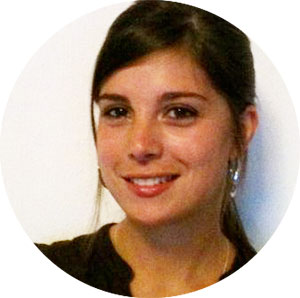October 8, 2021
How to set up a focus group: planning, organization, method
The focus group is a discussion group hosted by a moderator and composed of 6 to 10 participants. It is a qualitative research technique that aims to create exchanges and interactions between participants in order to create synergy and to bring out lessons or ideas.
For example, the focus group can also be used to identify participants' attitudes and behaviors towards an offer.
It can also encourage creative thinking and stimulate invention within the framework of Design Thinking, particularly during an ideation workshop. In this case, it is thus a collaborative innovation method.
During these ideation workshops, you can facilitate exchanges with different creativity exercises, which you can find in this article: Ideation workshops: 13 creativity exercises for your focus groups
Focus group overview
The focus group is a powerful tool in UX research (or user research), which generates effective data on user expectations before starting the design process. Essentially, it collects useful information about user feelings and behaviors in order to generate creative ideas by optimizing brainstorming.
When designing any kind of interactive system (a website, an application or a software for example), the focus group aims at understanding what the end-users expect. Thanks to the dynamic exchange between participants and the interactivity of the group, the moderator can quickly collect several thoughts, preferences and opinions from different profiles. This feedback is useful to deepen customer knowledge.
The focus group lasts between 2 and 3 hours, during which the moderator is required to lead this collaborative ideation while collecting valuable insights.
Remote focus groups
The focus group can be conducted in person or remotely.
In the face of the latest social, economic and global disruptions caused by the COVID-19 pandemic, the remote focus group interview can sometimes be more practical. In this case, as it may impact the fluidity of the debate and exchanges, it is necessary to implement a few tricks to free the participants' words:
- Allocate speaking time well
- Opt for collaborative work tools such as Miro
- Make sure you have profiles that are talkative enough to facilitate speaking
- Require that the webcams be turned on to humanize the exchanges
- Do not exceed 6 participants to maximize interaction
Discussing remotely is more comfortable for members, who can communicate from anywhere and avoid temporal and spatial barriers. In addition, the organization of this workshop is less resource-intensive, as everything takes place online.
In order to collect more precise feedback and to consolidate the lessons learned, it may be recommended to plan several focus group sessions.
The main advantages of the focus group
Perfectly associated with co-creation, the focus group allows to:
- Encourage the exchange of ideas
- Find solutions that can satisfy different profiles by allowing users to debate and find compromises
- Establish direct communication with the targeted users to collect their needs and expectations before starting on the design process. Even after the product is developed, this feedback is very useful to improve it according to the ideas generated by the users. It therefore helps tailor user experience to their needs and expectations.
- Collecting rich feedback quickly can lead to new ideas that can effectively optimize the design process
How to set up a focus group?
Preparing the focus group workshop
This step aims at preparing the spatial and temporal framework for the workshop. It involves:
- Defining the targeting and the profile of your participants: the focus group must be homogeneous, i.e. gather participants with similar profiles. For example, it is preferable to choose members belonging to the same age group or the same professional category, in order to ensure a more harmonious discussion and smoother communication between the participants.
- Prepare your interview guide: choose open-ended questions that identify the users’ motivations, intentions and needs. Or, you can opt for the group activity, which consists in breaking the group into smaller groups and asking them to carry out an activity related to a theme of the interview script (through card sorting, moodboards or crazy 8 for example), to choose the most efficient information architecture, to look for useful ideas to make a feature more practical, etc.
- In any case, prepare the framework in advance with the different parts and themes to be addressed. Estimate a time for each one, so as to treat each subject equally and to be able to cover all your questions.
- Identify the location for the focus group, if you opt for a face-to-face meeting. On the other hand, if you choose online discussion (online communities, videoconferences, etc.), you must prepare the software infrastructure required to develop this remote discussion: chat application, automatic transcription software, etc.
The choice of the moderator
The moderator is the main actor in the success of the discussion group. They must have impeccable communication skills and good listening skills, in order to effectively lead the discussion and gather feedback from the participants.
The moderator's mission is to lead the discussion and the exchanges between participants. They must observe and manage the time of each participant. The moderator must be neutral and must not intervene to influence an opinion or make prejudices. They must create a fluid discussion atmosphere and a climate favorable to the free expression of the participants' needs and emotions.
The moderator will make sure that:
- they will avoid the dominance of one participant over the rest of the group and the exclusion of shy and introverted members
- everyone participates in the discussion on equal footing
- they obtain transparent and spontaneous answers
- they provide objective reformulations and syntheses, factually based on the users' opinions
Recruiting participants
The recruitment of focus group participants must be aligned with your human resource, budgetary and time constraints, but also chosen according to specific selection criteria.
This process must also be appropriate to the objectives of your qualitative study in order to obtain significant and impactful insights. As a matter of fact, the choice of sampling must make sense in relation to the proposed offer. For example, in the case of an application for an insurance company, depending on your objectives, it will be possible to target:
- either people insured with any organization
- or people who are only insured with this company
- or people who are not currently insured but who are considering becoming insured
In short, there are no hard and fast rules. There are many possibilities and the criteria will depend on your issues and objectives. Once again, for a focus group, the only rule that can be applied to almost all cases is to have homogeneous profiles within the group.
Conducting the focus group
The moderator starts the interview session by introducing themselves and giving the participants an overview of the focus group’s objectives. Then, it is advisable to set up an activity to break the ice between the participants, by having them talk about more familiar and lighter subjects. The objective is to create a first exchange between the participants. You can find some examples in this article: Ideation workshops: 13 creativity exercises for your focus groups
The moderator should adapt their voice, body language and tone of voice to match the participants' profiles. This ensures better interactivity and helps to free up participants' voices. The moderator must create the right balance during the discussion in order to put participants at ease, gain their trust and encourage the less talkative speakers to express themselves.
The moderator uses an interview guide that contains instructions for conducting the discussion and the questions to ask the group members. This pre-planned document indicates the issues and various perspectives to be discussed, in addition to the objectives to be achieved and the type of information to be obtained.
They must allocate speaking time in such a way as to not exceed the allotted time and to allow all members to speak, without exception. To do so, they need to:
- Pace the responses, so as to achieve equity among all the interventions.
- Use acknowledgments, rephrasing, or repeating what the user has just said.
- Leave gaps so that everyone has the opportunity to speak, or to finish their thoughts.
In some cases, it is not easy to get a clear answer to a given question. In this case, the moderator must find the best alternative to ask the question in a different way and get a more convincing answer in an indirect way.
For effective note-taking, it is recommended that the interview session be recorded (in audio and video format), while warning participants that the discussion will be recorded. The moderator can also enlist the help of an observer to take written notes.
At the end of the interview, the moderator thanks the participants for their cooperation and their answers. Finally, a reward, often in the form of a gift certificate, is given to participants. The level of reward depends mainly on the time spent and the difficulty of recruiting participants.
Analyzing the results of the focus group
In order to create a relevant conclusion, it is essential to carefully review the notes and video recordings made during the focus group. This helps you to effectively analyze the feedback collected and to detect details that were missed during the interview.
This work allows you to organize your findings, refine them and summarize them. Thus, you will be able to establish a coherent and convincing argumentation plan that clearly details the conclusion reached. In the context of a digital project, this conclusion opens the way to the optimizations considered to improve the efficiency of the product and perfect its user experience (UX).
Final word
The focus group is a valuable qualitative research technique that allows the collective intelligence of the participants to be used to propose ingenious solutions to the design problem. This method also represents an effective user research technique that allows us to deepen our knowledge of the targeted customers through the exchanges established during the discussion.
The organization of a focus group is a coherent process that begins with the preparation of the appropriate environment for the implementation of the discussion: room reservation, software, applications, moderator, observer, etc. Then, it is necessary to select the most qualified participants whose profiles align with the characteristics of the target audience.
After the recording of the interview, the moderator rigorously analyzes the recordings and the notes taken, with the aim of creating an impactful analysis that will inform on the gaps to be corrected and the adjustments to be made in order to obtain a better UX.
Do not hesitate to contact us to learn more. You can also discover a concrete example through our Bouygues Telecom Entreprise case study.
All articles from the category: User research | RSS

